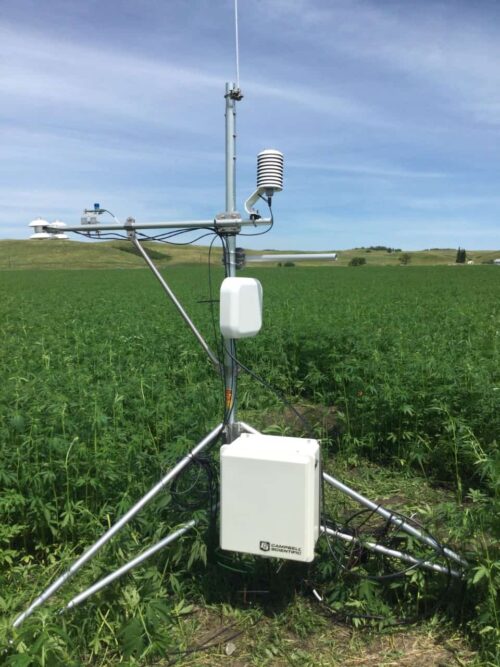As I sit down to write this article, the price for a barrel of oil continues to decline and is now less than $92 per barrel. That is a welcome relief to those of us who pay at the pump and is an indication that the demand for crude is declining due to a multitude of factors. But while crude and gas prices are dropping from historic highs, there is another “historic” that is taking place; funding for conservation programs is expanding, with optimism for additional resources through legislation at the federal level. In North Dakota, the biggest opportunity for conservation funding has been through the Outdoor Heritage Fund, which sets aside a portion of the production and extraction taxes from energy development. This has led to projects such as the Bakken Development and Working Lands Program, and the Grazing Resiliency in the Bakken Program. Both of these have combined to include projects on public and private lands impacting over 150,000 acres of grassland through rotational grazing developments, grass seedings, and juniper removal on an area within the Northern Great Plains Joint Venture boundary.
Amid increasing pressure on our natural resources through continued development or progress (pick your type), the prospect of available and projected funds is a welcome change that will help combat some of these pressures. For the first time in my career, it feels as if there is hope that at least some of the declining trends seen in native grasslands acres and wildlife populations can be addressed outside of ongoing programs such as NAWCA and CRP. Recovering America’s Wildlife Act (RAWA) and the North American Grassland Conservation Act (NAGCA) are two examples of federal legislation looking to curb negative impacts on wildlife and grassland resources. Additionally, America the Beautiful Initiative is providing an opportunity for state wildlife agencies to tackle issues within their boundaries. And throughout all of this, the discussion of carbon capture is reverberating through the country and the world to offset the impacts of climate change. To me, the word offset is a conundrum, but the important point is that it is bringing awareness and education to the very thing we work on every day…grasslands.
Grasslands are the number one carbon sink in the world. An article in Nature reports grasslands are more effective at capturing and storing excess atmospheric carbon below ground than forests, based on over a decade of research at 108 free-air CO2 enrichment sites (Terrer et al. 2021). As the conversation around carbon capture continues to heat up (no pun intended), conservation organizations, along with state and federal wildlife agencies, are in a position with personnel and expertise to design and deliver programs that will encourage grassland conservation. This conversation also provides new opportunities for project partners within the energy industry, which expands the reach of the message on the importance of grasslands. The interest in this topic presents a pathway for discussions with a broader range of North Dakota citizens on the economic, social, and environmental benefits our grasslands provide. Furthermore, ranchers will have an additional incentive to keep grasslands in grass and improve the efficiency of their operations to store more carbon. Within the past year I have been involved in several conversations between ranchers and energy companies, where companies are giving a serious look at paying ranchers for their carbon storage and further investing in programs that enhance and create new grasslands.
Seeing an opportunity to initiate a study that will tap into the growing interest in carbon and provide some details about carbon capture in the grasslands of North Dakota, the Natural Resources Trust gathered several partners and submitted a grant proposal to the ND Oil and Gas Research Council titled “Agricultural Carbon Capture in Western North Dakota.” Specifically, this study will demonstrate the role of managed grazing lands in reducing the environmental footprint of oil and gas exploration through biological carbon utilization and sequestration. In August of 2022, the ND Industrial Commission through the ND Oil and Gas Research Council approved the Natural Resources Trust proposal. We are excited to partner with Dr. Rebecca Phillips of Ecological Insights to conduct this study, and work with producers for site evaluations will begin in the spring of 2023. This is an excellent opportunity to show the public another benefit of our grasslands, and to work with the energy industry to chart a path forward for both resilient energy and ranching businesses. Here are some landowner perspectives to consider in regard to carbon capture in grasslands.
“This research is a unique collaboration between energy and cattle ranching communities that will show how well-planned grazing systems can serve both industries by capturing carbon and improving soil health.”
– Gene Veeder, North Dakota Rancher
“Ranchers want to know ways they can manage livestock to add the most value in terms of carbon and other ecosystem services. If they alternate season of grazing, for example, how will this change the system under these conditions? If there is a monetary benefit to conservation practices, more would participate. If, for example, the price of carbon moved from 15 to 50 dollars, producers would stand in line to learn more about adopting practices that improve carbon.”
– Lewis Heaton, North Dakota Rancher
We will be providing updates on the project in this newsletter moving forward. If you have any questions about the project, please feel free to email me at jesse@naturalresourcestrust.com. Have a great fall, everyone!

